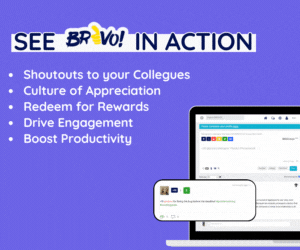
High performance is the driving force behind a company’s growth, profitability, and competitive advantage.
When employees consistently perform at their best, they contribute to increased productivity, streamlined operations, and higher customer satisfaction.
Incentives and rewards are crucial in driving high performance within a business.
They are potent motivators encouraging employees to go above and beyond, surpass targets, and deliver exceptional results.
In this blog, we will explore how incentives and rewards help drive any business’s high performance. Join us as we explore the subject matter!
Power of Incentives and Rewards
The power of incentives and rewards in driving performance and contributing to the success of a business cannot be underestimated.
These motivational tools can inspire employees to exceed expectations, achieve targets, and propel the organization forward.
Companies can cultivate a high-performance culture through enticing incentives and rewards, thereby nurturing employee enthusiasm and dedication and fostering a healthy atmosphere of competition.
Incentives and rewards serve as tangible acknowledgments of outstanding performance, motivating individuals and teams to strive for excellence consistently.
Moreover, these programs enhance employee engagement, job satisfaction, and loyalty, as they feel valued and recognized for their hard work.
According to a study by the Incentive Research Foundation, organizations that utilize incentives observe greater levels of employee engagement (89%), retention (87%), and loyalty (85%) compared to those that do not employ incentives.
When employees are motivated and driven to perform at their best, productivity increases, innovation flourishes, and overall business performance improves.
A well-structured system of incentives and rewards can significantly contribute to a business’s long-term success and growth.
How Does Reward Drive Performance?
Rewards have long been recognized as a powerful motivator that can significantly drive performance.
The prospect of receiving a reward, monetary, recognition, or other incentives taps into our innate desire for gratification and achievement.
When individuals are presented with a clear goal and an enticing reward, their focus, determination, and effort tend to increase.

Rewards create a sense of purpose and urgency, pushing individuals to exceed their usual capabilities.
Additionally, rewards can stimulate dopamine release in the brain, enhancing motivation, concentration, and overall satisfaction.
Utilizing the potential of rewards, organizations and individuals can establish a beneficial feedback cycle that drives performance and nurtures a culture characterized by outstanding achievement.
The Link Between Performance-based Incentives and Organizational Success
The link between performance-based incentives and organizational success is undeniable.
When organizations implement a well-designed system of incentives that directly tie rewards to individual and team performance, it creates a powerful motivation for employees to excel.
Performance-based incentives provide a clear line of sight between effort, achievement, and recognition, fostering a results-oriented organizational culture.
When incentives and rewards are aligned with key performance indicators and organizational objectives, employees are motivated to prioritize activities that directly impact the business’s success.
This alignment enhances productivity, encourages innovation, and promotes a sense of ownership and accountability among employees.
Moreover, performance-based incentives attract and retain top talent, as individuals are drawn to organizations that value and reward high performance.
Ultimately, when employees are motivated and empowered through performance-based incentives, it directly translates into improved performance, higher employee engagement, and overall organizational success.
Read More: The Impact Of Incentives In The Workplace
Designing Effective Employee Incentive Programs
Designing effective employee incentive programs is crucial for motivating and rewarding employees meaningfully.
It requires careful consideration of the organization’s goals, the desired behaviors or outcomes, and the employees’ needs and preferences.
A well-designed program should have clear and measurable objectives, ensuring the incentives are tied to specific performance metrics.
It is vital to offer a variety of incentives, including financial rewards, recognition, professional development opportunities, and non-monetary perks, to cater to different employee motivations.
Communication and transparency are vital in ensuring employees understand the criteria for earning incentives and how they align with organizational goals.

Regular evaluation and adjustment of the program based on feedback and performance data are essential for its effectiveness.
Through the creation of fair, meaningful, and objective-aligned incentive programs, companies can promote a culture characterized by high performance, engagement, and accomplishment, motivating their employees to excel.
Setting Clear Performance Goals and Objectives
Setting clear performance goals and objectives is crucial for the effectiveness of an employee incentive program.
Clear goals give employees a concrete understanding of what they need to accomplish to earn incentives.
When employees align their goals with the desired behaviors and outcomes that lead to organizational success, they gain a clear sense of direction and purpose.
Well-defined performance goals ensure that incentives are tied to specific, measurable, and attainable targets, enabling employees to track their progress and evaluate their performance.
Clear objectives also facilitate practical performance evaluation and feedback, allowing managers to provide guidance and support in areas where employees need improvement.
Organizations can establish a transparent and equitable framework that boosts employee motivation, increases productivity, and fosters overall success by implementing an incentive program with well-defined performance goals and objectives.
Identifying Key Performance Indicators (KPIs) for Measurement
Identifying key performance indicators (KPIs) for measurement is crucial for the effectiveness of an employee incentive program.
KPIs provide a quantitative and qualitative framework for evaluating employee performance and determining incentive eligibility.
These indicators should be directly aligned with the objectives of the incentive program and the overall organizational goals. By identifying the right KPIs, organizations can measure and track the specific outcomes, behaviors, or milestones that contribute to success.
Selecting measurable, relevant, and meaningful KPIs is essential, allowing for objective performance assessment.
Regular monitoring and analysis of KPIs provide valuable insights into employee progress and enable timely adjustments to the incentive program if needed.
Identifying key performance indicators ensures that the incentive program remains focused, fair, and practical, driving employee motivation and engagement and ultimately contributing to organizational success.
Aligning Employee Rewards With Desired Outcomes
Aligning employee rewards with desired outcomes is a strategic approach that drives an organization’s motivation, engagement, and success.
When rewards are directly tied to desired outcomes, such as achieving specific targets, demonstrating key behaviors, or delivering exceptional results, employees are incentivized to focus on those areas.
Organizations guarantee that employees receive recognition and rewards for their contributions, directly influencing the company’s objectives by aligning incentives with desired outcomes.
This alignment creates a clear link between performance and rewards, fostering a sense of fairness and transparency.
Moreover, it helps to reinforce desired behaviors, cultivate a performance-driven culture, and encourage continuous improvement.
When employees see a direct correlation between their efforts and the rewards they receive, it enhances their motivation, commitment, and overall job satisfaction.
Ultimately, aligning employee rewards with desired outcomes is critical in driving high performance, achieving organizational goals, and fostering a positive work environment.
Ensuring Fairness and Transparency in Employee Reward Programs
Ensuring fairness and transparency in employee reward programs is crucial for building trust, motivating employees, and maintaining a positive work environment.
Fairness involves treating employees equitably, regardless of personal biases or favoritism, and basing rewards on objective criteria.
Transparency entails clear communication regarding the reward program’s guidelines, eligibility criteria, and how rewards are determined.
Employees should clearly understand how their performance is evaluated and how it relates to the rewards they can earn. By establishing fair and transparent reward programs, organizations create a level playing field and foster a sense of trust among employees.
This transparency also enables employees to see the connection between their performance and the rewards they receive, promoting a results-oriented culture.
Additionally, fair and transparent reward programs demonstrate the organization’s commitment to valuing and recognizing employee contributions, ultimately enhancing motivation, engagement, and overall satisfaction within the workplace.
Reward and Recognition Ideas That Ignite High Performance
Reward and recognition ideas that ignite high performance have the potential to impact employee motivation and productivity significantly.
When employees are recognized and rewarded for their exceptional efforts and achievements, it creates a powerful incentive for them to strive for excellence consistently.

Well-designed reward and recognition initiatives can boost employee morale, engagement, performance, and business success.
Reward and recognition ideas that ignite high performance vary depending on the organization and its employees. Here are some practical ideas:
- Performance-based bonuses: Tie financial rewards directly to achieving specific goals or exceeding performance targets. It creates a direct incentive for employees to strive for excellence.
- Public praise and acknowledgment: Recognize outstanding performance in team meetings, company-wide emails, or newsletters. Highlight achievements and express gratitude for exceptional contributions.
- Certificates and awards: Present certificates or plaques to individuals or teams demonstrating exceptional performance or achieving significant milestones. This tangible recognition serves as a lasting reminder of their accomplishments.
- Showcasing success stories: Share success stories and achievements through internal communications channels. It can inspire and motivate others to emulate high performers and contribute to a culture of excellence.
- Customized recognition: Tailor recognition to individual preferences. Some employees may appreciate public recognition, while others prefer a more private acknowledgment. Understanding personal preferences ensures that the recognition is meaningful and impactful.
- Professional development opportunities: Offer opportunities for employees to enhance their skills and knowledge. It can include attending conferences, workshops or providing access to online training platforms. Investing in their professional growth demonstrates value and fosters continuous improvement.
- Flexible work arrangements: Provide flexibility in work schedules or remote work options. It can improve work-life balance, increase job satisfaction, and boost productivity.
- Team-building activities and outings: Plan team-building events to celebrate achievements and strengthen employee camaraderie. These activities can foster a sense of unity and motivate high performance as individuals work together towards shared goals.
- Social events and celebrations: Organize social gatherings or company-wide celebrations to recognize accomplishments and milestones. It creates a positive and enjoyable work environment that encourages high performance.
- Company-wide recognition programs: Implement a structured recognition program encouraging all employees to participate. It can include peer-to-peer recognition, where employees can acknowledge their colleagues’ contributions.
Non-Monetary Rewards that Motivate and Engage
Non-monetary rewards motivate high performance, foster employee engagement, and boost organizational productivity. While financial incentives are undoubtedly significant, non-monetary rewards offer distinct advantages.
Organizations create a workplace culture emphasizing appreciation and support by recognizing and valuing employees beyond their monetary compensation.
Non-monetary rewards demonstrate that employees are valued for their contributions and personal growth.
It fosters a positive and supportive work environment where employees feel motivated, engaged, and empowered to perform at their best.
As a result, non-monetary rewards contribute to high performance and employee satisfaction and ultimately enhance the overall productivity and success of the organization.
Non-monetary rewards that boost employee motivation and engagement include:
- Recognition and praise: Acknowledging and publicly appreciating employees’ contributions and achievements can significantly impact motivation and engagement.
- Opportunities for growth and development: Providing employees with training programs, mentoring, or educational opportunities allows them to enhance their skills, grow professionally, and feel valued.
- Flexible work arrangements: Offering flexibility in work schedules, remote work options, or compressed workweeks can improve work-life balance and increase employee satisfaction and commitment.
- Increased responsibilities or challenging assignments: Assigning employees with new responsibilities or challenging projects can provide a sense of trust, autonomy, and professional growth, boosting motivation and engagement.
- Career advancement opportunities: Providing a clear path for career progression, including promotions or internal job opportunities, motivates employees to perform at their best and invest in their long-term development.
- Employee involvement and decision-making: Involving employees in decision-making processes, seeking their input, and allowing them to contribute to organizational goals fosters a sense of ownership, empowerment, and engagement.
- Work-life balance initiatives: Offering benefits such as flexible leave policies, wellness programs, or family-friendly policies demonstrates a commitment to employees’ overall well-being and satisfaction.
- Meaningful and challenging work: Assigning employees tasks that align with their skills, interests, and aspirations gives them a sense of purpose and intrinsic motivation to excel in their work.
- Team-building activities and social events: Organizing team-building activities, outings, or social events create opportunities for employees to connect, build relationships, and foster a positive work culture.
- Appreciation and thank-you gestures: Simple gestures like handwritten thank-you notes, small gifts, or personalized tokens of appreciation can go a long way in making employees feel valued and motivated.
Implementing a combination of these non-monetary rewards can significantly impact employee motivation, engagement, and overall organizational performance.
What is the Importance of Rewards and Incentives for Performance?
Incentives and rewards are of utmost importance in organizations. They serve as a source of motivation and encouragement for employees, igniting their drive to excel.
Recognizing and rewarding employees for their accomplishments makes them feel valued and appreciated, resulting in heightened job satisfaction and engagement.
Incentives and rewards also aid in aligning individual and team objectives with the organization’s goals, fostering a sense of purpose and concentration on desired outcomes.
Regular rewards and recognition enhance employees’ commitment and cultivate a positive work culture promoting collaboration, productivity, and continuous improvement.
Reward and recognition perform also work as performance boosters in organizations.
Such platforms streamline recognizing and rewarding employees, ensuring fairness, consistency, and employee engagement and productivity.
Employee rewards and recognition platforms like BRAVO facilitate the collection and analysis of data, enabling organizations to gain valuable insights into performance trends, employee preferences, and the overall impact of recognition initiatives.
This platform can amplify the effectiveness of recognition efforts, reinforce organizational values, and contribute to the overall success and well-being of employees and the organization.
If your organization wants to boost performance through incentives and rewards, this platform can greatly help your organization.
Book a demo today to learn how BRAVO can help your organization boost performance by properly utilizing rewards and incentives.






